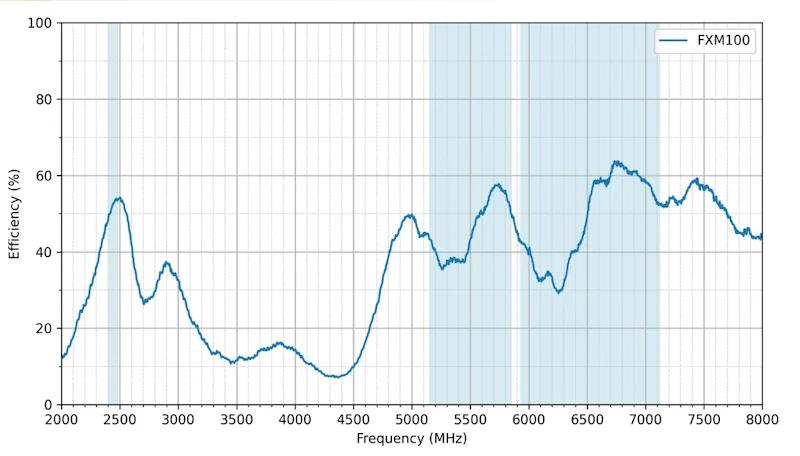
Taoglas Introduces the ‘Industry’s First’ Wi-Fi Antenna for an RJ45 Jack
At Embedded World North America last week, Taoglas introduced the FXM100, the industry's first Wi-Fi antenna designed specifically for mounting on an RJ45 jack.
This antenna responds to the spiking demand for wireless communication technologies. Today, devices are expected to support multiple frequency bands and various protocols, such as Bluetooth, Wi-Fi, and emerging standards like Wi-Fi 6 and 7. Meanwhile, the industry has placed a growing emphasis on smaller, more efficient devices.

Taoglas CEO Dermot O’Shea at Embedded World North America
The FXM100 is a compact, high-efficiency Wi-Fi dipole antenna targeting industrial applications such as modems, routers, gateways, and factory automation systems.
“Ant Jack” Saves Space, Mounting on an RJ45 Jack
Measuring 26.65 x 15.65 x 13.1 mm and weighing only 2 grams, the c—also called “AntJack”— is a space-efficient solution for devices requiring compact but reliable wireless capabilities. The antenna is built on a flexible PCB pre-attached to a lightweight plastic carrier for easy integration with an RJ45 jack. It comes equipped with a 60-mm coaxial cable with a diameter of 1.37 mm, terminating in an I-PEX MHF I (U.FL-compatible) connector.

Close-up image of the FXM100 at Embedded World North America.
The design also ensures the antenna maintains omnidirectional radiation patterns for better coverage and consistent signal strength across all supported frequency bands. The solution supports operation across the 2.4 GHz, 5.8 GHz, and 7.125 GHz frequency bands, with peak gains of 2.1 dBi, 4.5 dBi, and 5.0 dBi, respectively. The result is compatibility with Bluetooth and the latest Wi-Fi 6, 6E, and upcoming Wi-Fi 7 standards.
Taoglas purpose-built the antenna for industrial use cases, with the FXM100 complying with REACH standards and operating from -40°C to 85°C.
Challenges in Multi-Band Wireless
Designing multi-band wireless communication solutions is a unique challenge in today’s world, where IoT devices are shrinking, but performance demands continue to grow.
One of the primary challenges in multi-band antennas is maintaining high efficiency across all frequency bands. Lower frequency bands, such as 2.4 GHz, offer better range and penetration through walls but may suffer from interference due to overcrowding. Higher frequency bands, like 5.8 GHz and 7.1 GHz, provide faster data rates and less interference but are more susceptible to signal attenuation, especially in complex environments. Designing an antenna that performs consistently well across this wide range is a significant engineering task.

FMX100 efficiency versus frequency. Image used courtesy of Taoglas
The physical size of the antenna is also important. Higher frequencies require smaller wavelengths, which theoretically enable smaller antennas. However, supporting multiple bands often means the antenna must be designed with enough complexity to handle varying wavelengths while maintaining consistent radiation patterns and minimizing interference. This becomes an even more pressing issue in space-constrained IoT devices, as antenna design must balance performance, size, and integration without impacting the device's form factor.
A Boon for Space-Constrained MIMO Designs
Taoglas considers AntJack a useful option for complex MIMO designs where antenna location and positioning are important and space is limited (for example, 4×4 or 8×8 MIMO configurations). The FMX100 is currently available from Taoglas and its distributors. It can be purchased as a standalone device or alongside other Taoglas solutions, including magnetic connectors and Ethernet cables.



